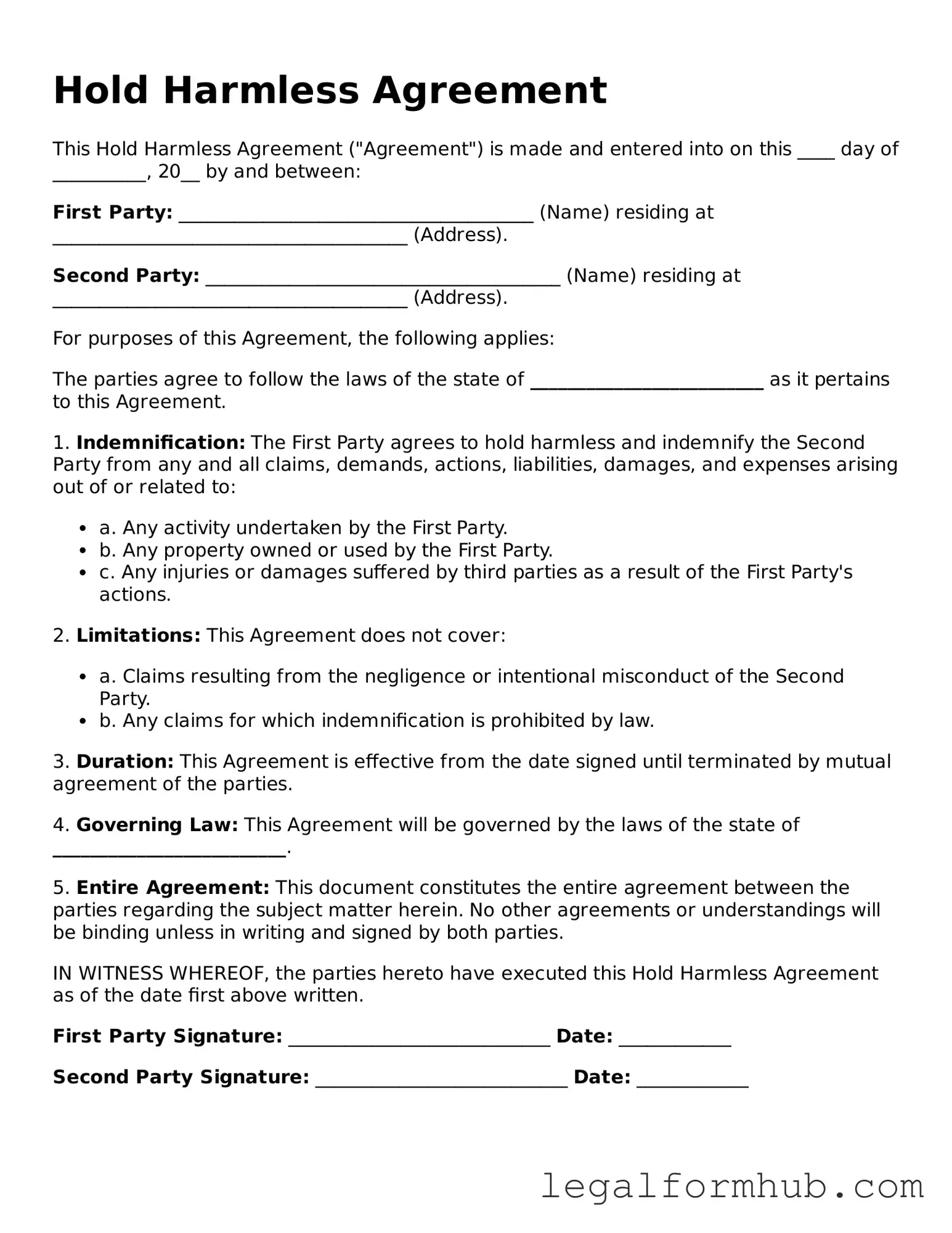A Waiver of Liability is similar to a Hold Harmless Agreement in that it protects one party from being held responsible for injuries or damages incurred by another party. In this document, the individual agrees not to hold the organization or individual liable for any harm that may occur during an activity. Both documents require clear communication of risks and a mutual understanding of responsibilities. The key difference lies in the focus; a waiver primarily emphasizes the relinquishment of the right to sue, while a hold harmless agreement often includes indemnification clauses, which require one party to cover the other’s losses.
An Indemnity Agreement is closely related to a Hold Harmless Agreement. This document typically outlines the obligation of one party to compensate another for certain damages or losses. Like the Hold Harmless Agreement, it establishes a protective boundary, ensuring that one party does not suffer financial loss due to the actions of another. The main distinction is that indemnity agreements often involve a broader scope of liability, potentially covering third-party claims, whereas hold harmless agreements usually focus on direct interactions between the parties involved.
A Release of Liability form serves a similar purpose by allowing one party to relinquish their right to claim damages from another. This document is often used in recreational activities or events. Both the Release of Liability and the Hold Harmless Agreement aim to protect one party from legal claims. However, the release form typically requires the participant to acknowledge the risks involved and voluntarily accept them, while the hold harmless agreement explicitly states that one party will not hold the other accountable for specific outcomes.
An Assumption of Risk Agreement is another document that parallels the Hold Harmless Agreement. This agreement requires individuals to acknowledge the inherent risks of a particular activity and agree to participate despite those risks. Both documents serve to limit liability for the party organizing the activity. The key difference is that the Assumption of Risk Agreement emphasizes the individual's acceptance of risk, while the Hold Harmless Agreement focuses on protecting one party from claims arising from those risks.
An Insurance Policy can also be compared to a Hold Harmless Agreement, although it functions differently. While a Hold Harmless Agreement prevents one party from being held liable for damages, an insurance policy provides financial protection against such liabilities. Both documents aim to manage risk, but an insurance policy typically involves a contractual relationship with an insurer, whereas a Hold Harmless Agreement is a direct agreement between two parties regarding liability and responsibility.
A Service Agreement may share similarities with a Hold Harmless Agreement, particularly when it includes indemnification clauses. In a service agreement, one party agrees to provide services, and the other party often seeks protection against potential claims arising from those services. Both documents create a framework for accountability. However, a service agreement typically covers a broader range of terms related to the services provided, while a Hold Harmless Agreement is more focused on liability issues.
Understanding the significance of various legal agreements can be vital for protecting your rights and interests. One such document is the Emotional Support Animal Letter form, which serves to certify the need for an emotional support animal, offering essential assistance for those seeking to improve their mental well-being. For anyone considering the benefits of having an emotional support animal, you can get started by filling out the Fill PDF Forms that facilitate this process, ensuring you receive the support you need.
Lastly, a Partnership Agreement can be likened to a Hold Harmless Agreement in that both documents establish responsibilities and liabilities among parties. In a partnership agreement, partners outline their roles and how they will share profits and losses. While a Hold Harmless Agreement focuses on protecting one party from claims, a partnership agreement often includes clauses that address how partners will handle liabilities and indemnification among themselves. Both documents aim to create clarity and protect the interests of the parties involved.
